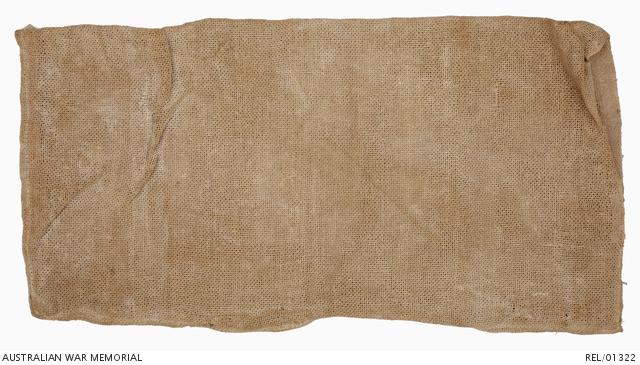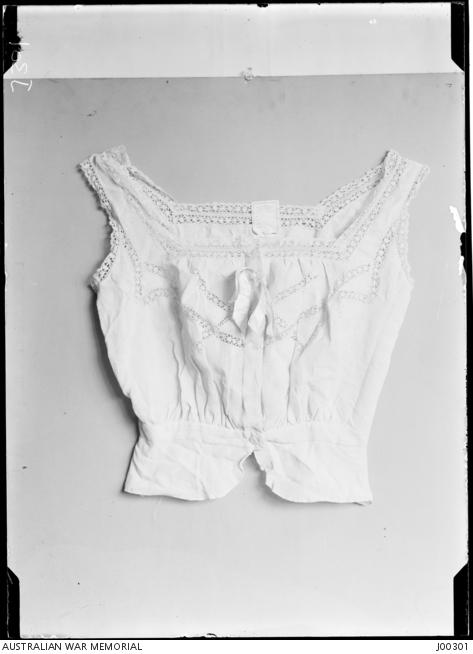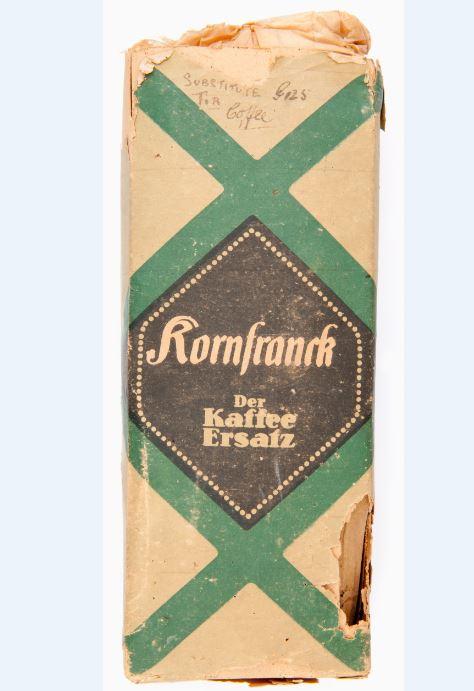Nothing Like the Real Thing
While cataloguing battlefield relics from Fromelles one of our curators came across an item they had not seen before, a German ersatz (substitute) sandbag made from paper. A search on the Memorial's database shows that this was not the only item that used substitute material; there are many items in the collection, including an ersatz felt pickelhaube (spiked helmet) and a packet of ersatz 'coffee'. As with France and Britain during the First World War, Germany brought in measures to save resources for the war effort, these shortages of material and food affected civilians and military alike.

Brown German ersatz (substitute) sandbag made from paper twisted into strands, then woven. The bag is sewn together with cotton tread. https://www.awm.gov.au/collection/C114458
This sandbag was picked up at the front a few weeks before the Battle of Fromelles, 19 July 1916.
The sandbag was made by cutting rolls of unbleached paper into strips. It was then gathered on a spindle which rotated to give the paper the necessary twist. The paper thread was then woven into a coarse cloth. Then it was cut and stitched together with what appears to be cotton, but could be ‘ersatz cotton’ which was a mixture of nettle and willow fibre and small amounts of cotton. Paper based cloth was even used in the production of shirts, one of which we have in the Memorial’s collection.
German military uniforms were also affected by shortages of material. This pickelhaube (spiked helmet) was collected by a stretcher bearer Private Herbert Vincent Reynolds, during the 4 Field Ambulance’s advance along the Somme in August 1918. In a letter home to his sister he states his surprise at finding the pickelhaube especially as the infantry had all ready passed through the village and usually they collected all the good souvenirs first.

Prussian enlisted man's wartime Erastz (substitute) pickelhaube with steel helmet plate. https://www.awm.gov.au/collection/C1253059
Pickelhaubes are normally made from leather but for a short period between September 1914 and mid 1915 were made from felt because of a shortage of leather and the need to quickly equip and outfit the mobilising German army. The German felt hat industry was well establish before First World War and had the technology to produce the amounts of helmets needed. As well as rabbit fur or shredded wool felt, other materials were used as substitutes to leather for the pickelhaube, such as tin plate and steel. Even pressed paper, cork, fibre or lacquered cardboard was used. These were inefficient in wet weather and as with the leather pickelhaubes they were not effective protection against bullets or shrapnel.
Ersatz felt helmets were the same shape as leather helmets but were easier to manufacture. Usually they were pressed from one piece of felt which reduced production time. Some helmets were made up of two or four pieces of felt stitched together or had small additions of leather. They used pre-war fittings made of brass or silver, but as these metals became scarce, grey painted steel fittings were used. Sometimes a combination of both was used. The helmets came in black or field grey felt and were sometimes lacquered black. During 1915 production of the felt pickelhaube ceased as leather became available again. By the end of 1916 German front line troops were wearing the model 1916 steel helmet, although the pickelhaube continued to be worn by troops in Germany.
It wasn't just uniforms that where made from substitute materials. In an effort to save resources for the war effort many clothing items were made from alternative fabrics.

Woman's paper camisole made as substitute clothing and used in Germany during First World War. The paper used to make this camisole is known as Ersatz
Germany was hit hard by food shortages caused by British and French blockade of German ports and by the end of 1916 Germany was forced to drastically tighten its belt. Staples such as bread came to include ingredients such as rye, a smaller amount of wheat, sugar and potato meal. This does not sound to bad and was meant to have been quite palatable. Rye and wheat were not always available and oats, Indian corn, peas and buckwheat meal were used as substitutes in bread. Saw dust was also used by some bakers in their products as well. ‘Meat’ could be made from a mixture of vegetables, nuts and offal, while an egg substitute was made up from maize and potato meal. There was a desperate need for fat and they tried to obtain substitutes from rats, hamsters, crows, cockroaches, snails and earthworms. An attempt even was made to gain fat from hair clippings and old leather boots. Coffee went through varying stages of substitution during the war, from a blend of roasted barley and oats with coal tar flavouring, through to carrots and yellow turnips towards the end of the war. The example below of 'coffee' is dated c 1917 - 1918 and comes in its original packaging. The ingredients of this 'coffee' is believed to be made up of cereal and vegetable matter.

Coffee substitute made from cereal and vegetable ingredients.
These items from the Memorial's National Collection help us to understand the lengths that Germany went to sustain its war effort. This effort though was not enough, the harsh conditions on the home front, the failure of the German army’s 1918 offensive and the subsequent Allied advance made Germany ripe for unrest. German sailors mutinied in late October 1918 and the revolt spread to the workers on land. Kaiser Wilhelm abdicated on 9 November and power was given to the Chancellorship with a German Republic announced. The Armistice came on 11 November ending the bloodiest war the world had seen.